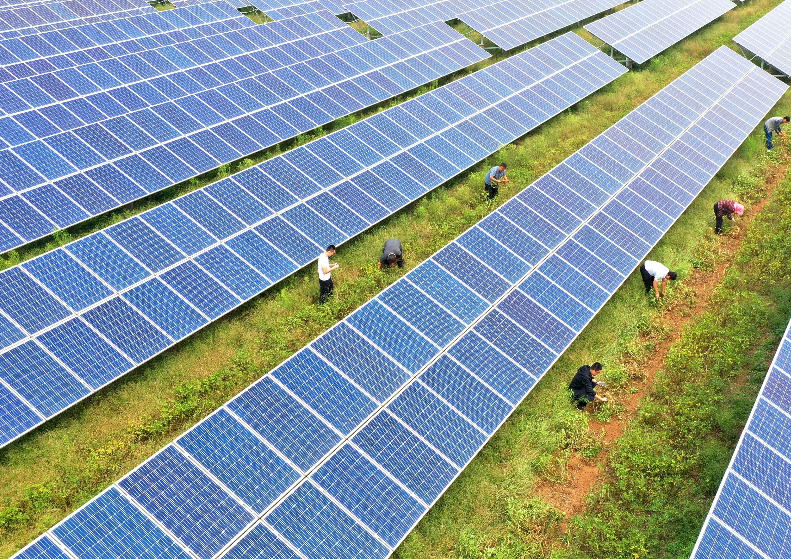HOHHOT, July 9 (Xinhua) -- Under a blue sea of solar panels, sheep roam and graze on fresh grass in north China's dry pastures.
"That's my herd. I'm a herdsman with a job -- I'm a maintenance worker at the solar power station," said Hasenmongkh, 30, pointing to his flock of nearly 100 sheep.
The photovoltaic power base was built by Beijing BOE Energy Technology Co., Ltd. on desertified land in the Xilin Gol League's Sonid Right Banner in the Inner Mongolia Autonomous Region.
With a total installed capacity of 200,000 kilowatts and an 85-megawatt-hour energy storage system, the power station was built in five months and began generating electricity immediately. It was connected to the grid in December 2022.
The power station covers an area of nearly 7,000 mu (about 466.7 hectares), borrowing pastures owned by two herding households, including Hasenmongkh's. Hasenmongkh is entitled to receive an annual rent of 40 yuan (about 5.5 U.S. dollars) per mu.
Guan Chao, director of the power station, said that the photovoltaic modules are installed 1.5 meters above the ground, which is higher than an ordinary photovoltaic bracket, to leave sufficient room for livestock to pass beneath.
Hasenmongkh finds it easy to herd his flock to the power station as sheep look for the shade, where grass grows better.
"I just need to give them some water once at noon every day, which doesn't affect my work at the power station," he said, adding that he earns nearly 4,000 yuan a month as a maintenance worker and receives 110,000 yuan from the land lease each year.
Among the 13 locals employed at the power station in the county-level banner, there are five herders. The station has generated more than 160 million kilowatt-hours of green electricity.
The "photovoltaic plus" renewable energy development model has been encouraged and promoted in a number of China's provincial-level regions, including Inner Mongolia, Shanxi, Qinghai, Hubei and Zhejiang.
The shade provided by the solar panels is used for more than just herding, such as the farming of drought-resistant plants like medicinal herbs.
In Chaidam Village in Ordos City's Dalad Banner, rows of Astragalus membranaceus grow under 5,000 mu of photovoltaic modules, forming a sand barrier.
The power station boasts an installed capacity of 1 million kilowatts, generating about 2 billion kilowatt-hours of green electricity annually, which is equivalent to saving 680,000 tonnes of standard coal and reducing 1.65 million tonnes of carbon dioxide emissions.
Zhang Bing, an official of the energy bureau in Dalad Banner, said that in addition to astragalus, the power station has also seen red dates and Amorpha fruticosa planted, and more than 1,000 cattle have been bred under solar panels.
He said the "photovoltaic plus" new energy power stations help people anchor sands and explore integrated development that combines rural revitalization and ecological protection.




 A single purchase
A single purchase









